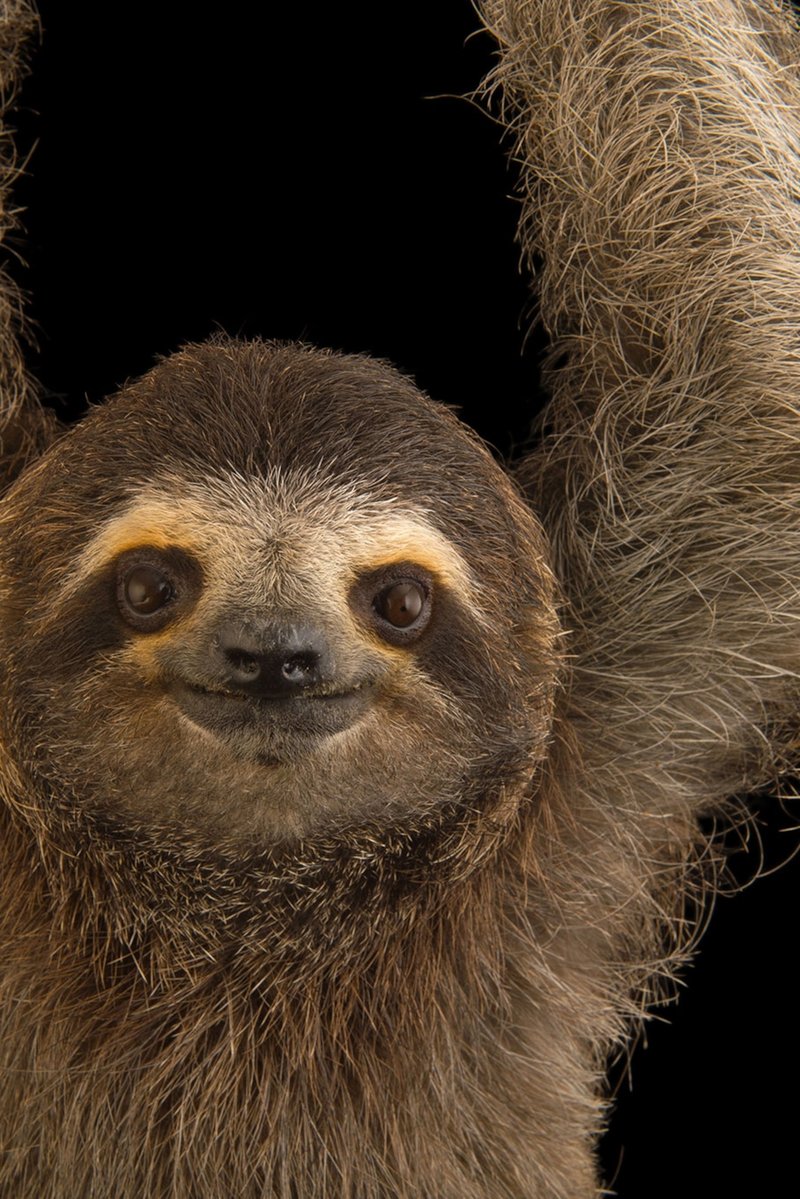
Imagine the sloth as a master of survival, navigating the slow lane of life with a strategy all its own. While they may not race around like cheetahs or outsmart dolphins in tricks, sloths possess a different kind of intelligence—one that’s rooted in their environment and lifestyle. Let’s dive into what makes the three-toed sloth tick, exploring their cognitive abilities, behavior, and how they adapt to their slow-paced existence.
The Unique Brain of a Three-Toed Sloth
You might be surprised to learn that a three-toed sloth’s brain isn’t all that different from our own, at least in structure. They have a relatively large brain compared to their body size, which is something you’ll find in many mammals. This brain structure reflects their need to navigate the complexities of their environment, albeit at a leisurely pace. Here’s the thing—while they aren’t solving math problems, their brains are designed to help them manage life in the treetops.
Interestingly, sloths have fewer neurons than you might expect, especially when compared to more agile mammals. However, that doesn’t mean they’re not effective thinkers. Sloths use their brains for specific tasks, like finding food or avoiding predators. Their slow metabolism means they need to be energy efficient, leading to creative adaptations in how they think and behave.
One fascinating aspect of a three-toed sloth’s brain is its ability to process sensory information. They have excellent color vision, which helps them identify ripe leaves—a crucial part of their diet. So, while they may seem slow, there’s a method to their madness. They gauge their environment carefully, making choices that maximize their chances of survival in a world filled with potential threats.
Slow and Steady: Their Approach to Life
If you’ve ever watched a sloth move, you’ve probably noticed how deliberate they are. This slow and steady approach is a key part of their survival strategy. Sloths are slow not just because they prefer it, but because it helps them conserve energy and avoid detection by predators. Their movements are calculated, allowing them to sneak through trees without attracting too much attention.
This behavior is a terrific example of evolutionary adaptation. By moving slowly, sloths reduce their risk of being spotted by larger predators like jaguars and eagles. Their fur even grows in a way that allows algae to thrive on it, providing camouflage in the treetops. It’s a clever form of self-defense that highlights their unique cognitive adaptations to their environment.
Moreover, sloths have areas in their brain that are specifically tuned to recognize threats and navigate through their habitat. This allows them to make quick yet calculated decisions when necessary, like deciding whether to hide or move to another tree. So, while they may be slow movers, there’s plenty happening inside their heads.
Social Behavior and Communication
You might think of sloths as solitary creatures, and while they do enjoy their alone time, they aren’t completely anti-social. They communicate with one another through a range of vocalizations. From grunts to high-pitched squeals, these sounds help sloths express themselves, whether that’s signaling alarm or attracting a mate.
Interestingly, sloths also engage in behaviors that suggest a level of social intelligence. For instance, mother sloths are known to be caring and attentive to their young, teaching them essential survival skills. This nurturing behavior indicates a cognitive ability to form social bonds and recognize relationships—something that’s vital for the young sloth’s development.
Moreover, researchers have observed sloths engaging in grooming behaviors. They’ll groom not only themselves but also their offspring. This gives insight into their social dynamics and cognitive ability to understand the importance of hygiene and bonding. Ultimately, these social behaviors are just another layer of what makes sloths fascinating creatures with more cognitive depth than we might initially assume.
Problem Solving and Learning
When it comes to problem-solving, sloths might not be pulling rabbits out of hats, but they do have their own ways of tackling challenges. For example, researchers have found that sloths can learn to navigate obstacles in their environment, like moving from one branch to another. In a sense, they exhibit a kind of intelligence that’s practical for their survival.
You might be wondering how sloths learn this information. They often rely on their mothers for guidance, which is common among many species. Young sloths observe their mothers as they navigate trees, and, by watching, they learn to mimic their behaviors. This ability to learn by observation is a sign of cognitive advancement, showing that sloths can adapt their problem-solving skills over time.
In addition, sloths remember pathways they’ve taken in the past. This spatial awareness is crucial for finding food or moving to safer areas. It illustrates their ability to not just live in the moment but also plan ahead, which isn’t something everyone thinks of when considering these laid-back animals.
So, how smart is a three-toed sloth? They may not have the quick wit of some animals, but their intelligence is perfectly suited to their slow-paced lifestyle. With unique adaptations, clever problem-solving skills, and social behaviors, sloths prove that intelligence comes in many forms.
By understanding their cognitive abilities and behaviors, we not only appreciate sloths better, but we also gain insight into the incredible diversity of animal intelligence. These creatures remind us that survival isn’t always about speed or agility; sometimes, it’s about taking life slowly and being smart enough to navigate your world with care. So next time you spot a sloth lounging in the trees, remember—they have a lot more going on than just taking it easy!

